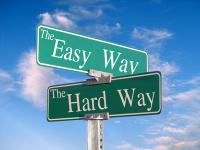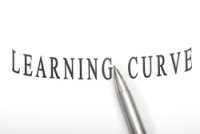Body? Emotions? What Are They Telling Us?
/ . In the same way, a body pain may be telling us we have painful emotions that we are failing to deal with, and that something is wrong.
. In the same way, a body pain may be telling us we have painful emotions that we are failing to deal with, and that something is wrong.
Dr. Beth shares insights about
relationships, stress, and more.
 . In the same way, a body pain may be telling us we have painful emotions that we are failing to deal with, and that something is wrong.
. In the same way, a body pain may be telling us we have painful emotions that we are failing to deal with, and that something is wrong. Trying hard to stay calm, cool and collected! This recent status report on Facebook caught my attention. In our super busy world, this statement sums up what many of us are trying to do, much of the time.
Trying hard to stay calm, cool and collected! This recent status report on Facebook caught my attention. In our super busy world, this statement sums up what many of us are trying to do, much of the time.
BODY We try to stay calm, cool and collected and control stress in our body (tense shoulders, teeth grinding, sweating, and shallow breathing). But often, we fail to manage our stress because we don't know how. Or we ignore and avoid what our body tells us.
EMOTIONS We may try, but find it impossible to control, negative emotions such as fear, anger, shame, and feeling overwhelmed. "I shouldn't feel this way." Perhaps we try to avoid them by distracting ourselves. Or we may avoid them as we block or ignore them. Going numb is a symptom of avoidance.
MIND - WILL We often do the same things with unacceptable thoughts and desires. We try to control them and figure them out. Or try to avoid them as we distract ourselves or go numb.
THEY DON'T JUST DISAPPEAR Whether we try to avoid or control these reactions, we don't take responsibility for them. And so we fail to deal with them constructively. Does that settle the matter? Oh no. Those messages from our bodies, emotions, or minds go underground—into our subconscious. And there they stay until they gather enough power to resurface, or until circumstances force them into our awareness.
A LOSE-LOSE SITUATION So we create a lose-lose conflict. It I let it all hang out, I lose. I hurt people or make a fool of myself. But if I mindlessly and automatically try to avoid or control my thoughts, feelings and desires, I also lose because I don’t really resolve them. What’s a person to do?
Good question. You can’t fix something if you are not aware of it. So why not allow yourself to think what you think, feel what you feel, want what you want? Willingness to stay aware gets you off auto-pilot. Now, you can take responsibiity for your reactions and make healthy changes.
TRY THE CHOICE-CUBE METHOD The simple Choice-Cube self-help method www.amazon.com can help you manage your body, thoughts, emotions, and desires. Here's how.
First, the method gives you a mental framework to help you stay in touch with what you feel think, and want. Second, there are simple tools to help you do what’s best for you and for those you care for. Third, there are four key steps to guide your change, in a rliable, systematic way, from inappropriate defensiveness to healthy problem-solving.
Using this method, you learn to feel, think, and want without having to act on it. Instead, you learn to use the framework, tools, and steps to make important changes and take the best course of action. You become your own BFF—best friend forever--and relate in a healthy way to those you care for.
In contrast, like the gardener who plants good seeds, when we plant  seeds of honesty and kind thoughts, words, and actions, we learn to trust ourselves and others can trust us. Such a harvest satisfies and blesses us and others.
seeds of honesty and kind thoughts, words, and actions, we learn to trust ourselves and others can trust us. Such a harvest satisfies and blesses us and others.
PLANTING GOOD SEED DEMANDS EFFORT Life often seems a battle between what we want to do and what we need to do. Planting good seeds takes effort and discipline--perserverence. At times, staying honest and kind may even seem impossible. We may feel we are losing the battle. But every choice matters.
OUR THREE CHOICES Everything depends on our choices. And really, we have only three kinds of choices.We can try to inappropriately avoid issues, control them, or successfully resolve them.
FOUR STEPS TO A GOOD HARVEST Here are four steps to help us solve problems and sow good seed. When we perserver we will reap a rich, satisfying harvest.
Step 1: We recognize we are planting bad seed.
Step 2: We manage our stress and our emotions.
Step 3: We think more clearly now and see the pros and cons of the situation. We can focus
on the solution instead of on the problem.
Step 4: We take honest, compassionate action.
THE CHOICE-CUBE METHOD CAN HELP With each step we take, each choice we make, we program ourselves. The good news is that we can use the Choice-Cube Method’s tools and four key steps to make wise choices.
We can stop planting bad seed. Good!
We can face reality, work through short-term loss or pain, and plant good seeds. Better!
We can make healthy choices and program ourselves for long-term gain. Best!
What about you? What kind of crops are you sowing? Reaping? The Choice-Cube Method presented in my book, Become the Person You Were Meant to Be, can help you sow good seed.
 JEN’S STORY. Jen is plagued with feelings of guilt and regret. She can’t control her rage. Last night, she yelled at her youngest child again because he accidentally spilled his juice on a brand new tablecloth. She hates herself for it now.
JEN’S STORY. Jen is plagued with feelings of guilt and regret. She can’t control her rage. Last night, she yelled at her youngest child again because he accidentally spilled his juice on a brand new tablecloth. She hates herself for it now.
She has promised herself over and over that she’ll never do that again. But then another little accident happens, which sends her over the edge. Her son is 5-years-old, for crying out loud! He’s still terribly clumsy, Jen understands that. Now. But she didn’t see it that way last night.
IS SHE DOOMED? Is Jen doomed to react with rage? Is it simply who she is? Of course, not! She can change!
EASIER SAID THAN DONE. But it’s easier said than done. What Jen doesn’t understand is that no matter how hard she tries to be more patient with her son she will not succeed unless she changes the beliefs and the inward reactions that cause her angry outbursts.
Her reactions (stress, negative emotions, thoughts and desires) and her angry behaviors result from some painful “unfinished business” and distorted beliefs -- things too painful to bear locked away in her subconscious mind. Only a real conscious effort will enable her to change them.
JEN'S TASK. Her task is to make what is subconscious conscious. But why? Isn’t it better to just leave these painful things alone? Why bring it all back to the surface?
The answer is that unless we make some things conscious, we are doomed to make the same mistakes over and over. Hopefully, there comes a time when we realize we don’t want to keep making the same mistakes. We want to change.
HOW DO WE MAKE SOMETHING CONSCIOUS? But how do we make something conscious? I suggest that we start with staying aware of our body sensations and emotions. Usually, when dealing with the subconscious, our mind is not our friend! It just gets in the way. Our mind may be telling us things are okay, but our body--our gut--is saying, “Watch out!”
At moment like this, our conscious mind is not what we should be paying attention to. If we are wise, we will learn to pay attention to signals from our subconscious that surface as our inward reactions--the reactions of of our body (stress), negative emotions, mind/mental pictures, and will/desires.
THE FASTEST WAY TO LASTING CHANGE. The fastest way to lasting change is through changing our inward reactions. Remember, these are the reactions of our body, emotions, mind, and will/desires. Once we know what to look for and can identify our reactions, we can begin to change them. And, good news! If we learn to work with our inward reactions, we can retrain ourselves to stop repeating the same mistakes. Even better, when we know how to change our inward reactions, we can change our deep beliefs and choose our behaviors. We can actually rewire our brain.
In my book, Become the Person You Were Meant to Be - The Choice-Cube Method, you will find, among other things, tools and 4 steps to help you recognize, and work through, your inward reactions and deep beliefs. Click here to see inside the book http://amzn.to/Ug268G. You can retrain yourself, change and grow, and engage life more fully. Also, click here http://www.choicecube.com to check out my website and learn about the method. Copyright Dr. Beth Blevins Cujé 2011
People who  rely on antidepressants to go on about their daily lives may be in for a bit of a shock at the revelation that follows. The benefits they obtain from the drugs they take may be – quite simply – only the results of the “placebo effect.”
rely on antidepressants to go on about their daily lives may be in for a bit of a shock at the revelation that follows. The benefits they obtain from the drugs they take may be – quite simply – only the results of the “placebo effect.”
What’s The Placebo Effect? The placebo effect happens when a sugar pill, for example, is substituted for the anticipated medication. In reality patients receive no medication; they just believed they did. And they feel better because they expect to feel better.
Quite the shocker, right? Recently, Irving Kirsch of the Harvard Medical School and Beth Israel Deaconess shared the result of his research, which basically makes a case for this very point.
Some Research According to Kirsch, the pharmaceutical companies that produce Prozac, Paxil and Zoloft had to repeat many clinical trials before they could obtain the minimum number of positive results necessary for FDA approval.
The numerous trials that failed to show positive results from the medication simply revealed no significant results. But even more interesting, the clinical trials that turned out positive revealed results that were barely significant.
On this basis, Kirsch suggests that subjects who experienced benefits from these drugs obtained them from the placebo effect rather than from the drugs themselves.
Now, what does this say about the power of our mental states?
The Mind-Body Connection Without a doubt, there is a vital link between our mental states and our physical health. Mental states affect our bodies and vice versa. It’s the typical case of the person allergic to cats who starts sneezing the moment he/she sets foot in the apartment of someone who has a cat.
But what if this person is merely reacting to the thought of a cat hair-filled apartment – in other words, with his mind instead of his body? It’s possible that our fear alone can breed physical symptoms, whether it’s the fear of cat hair or germs.
In an earlier post, we explained how emotional states send physical messages to the body through proteins called neuropeptides. These bodily messages may be linked to negative or positive attitudes that will affect us physically.
But one thing is certain…working through negative attitudes and mental states and choosing instead to deal with negative feelings in a healthy way may do wonders for us. We may even realize we don’t need the meds anymore.
Want to find out more about a way to treat depression that does not involve popping pills? In her book, Become the Person You Were Meant to Be, Dr. Beth Cujé sets forth tools and steps to help you move into the light and away from depression. Here’s your chance to download its first chapter for FREE. Just click here.
You can find my book on Amazon.